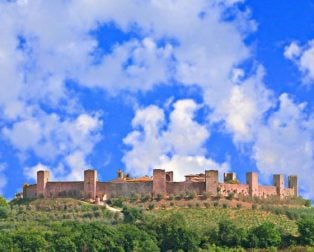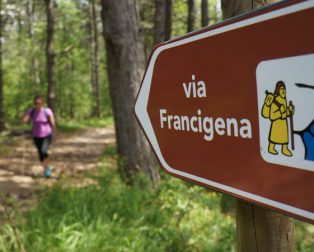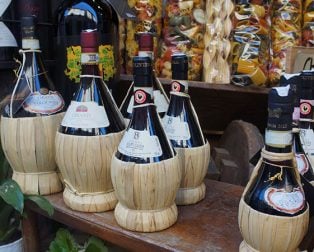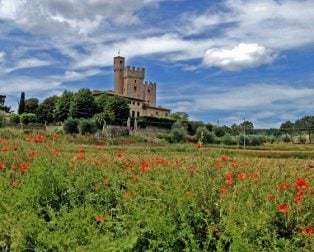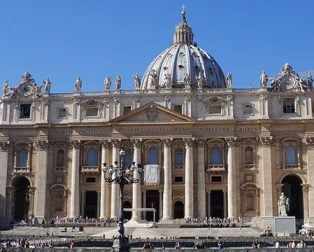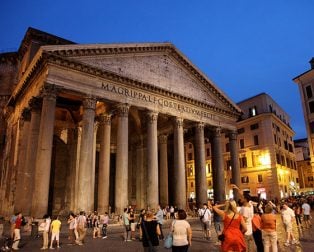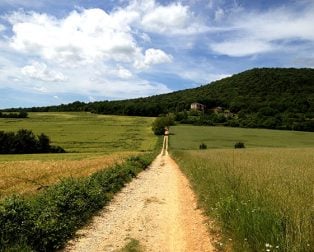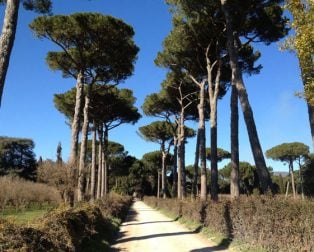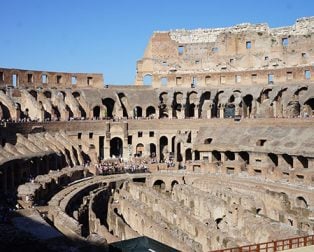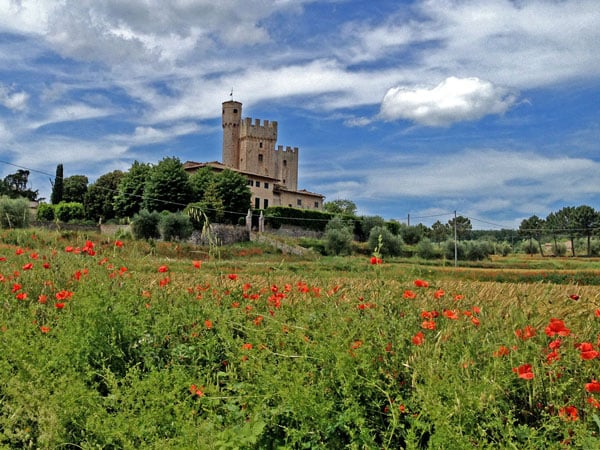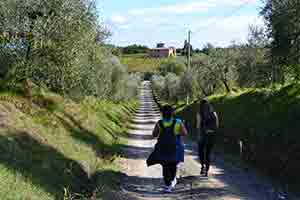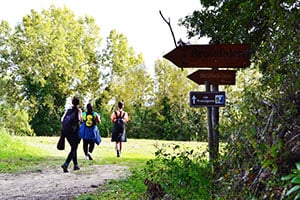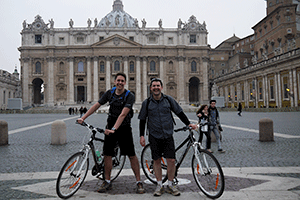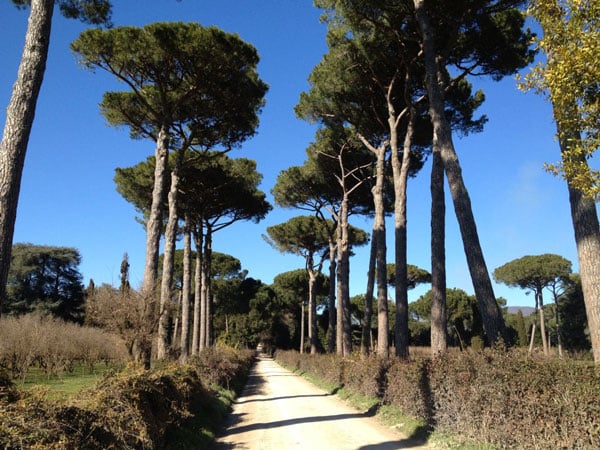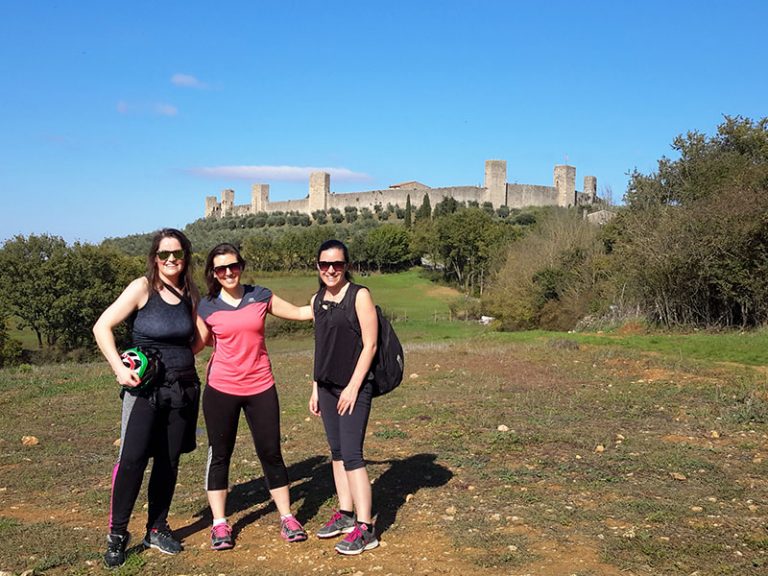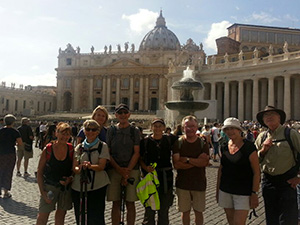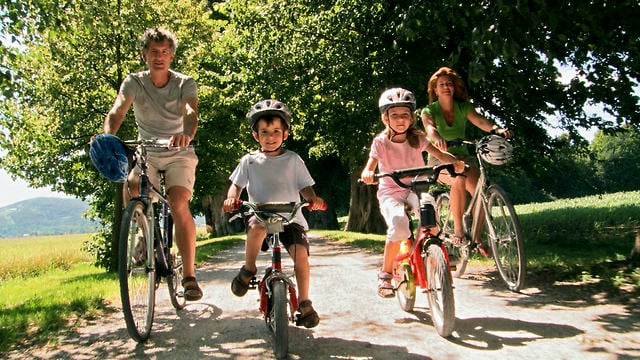The Via Francigena
The Via Francigena, often called the Camino to Rome, is one of Europe’s oldest and most remarkable pilgrimage routes. Beginning in Canterbury, England, this ancient trail crosses France, Switzerland, and Italy, ending at St Peter’s Basilica in Rome — the heart of Christendom.
Like the Camino de Santiago, the Via Francigena has been walked by pilgrims for centuries. In medieval times, it linked abbeys and monasteries across Europe, guiding travellers towards the Eternal City. Today, it remains a journey of both faith and discovery, inviting modern pilgrims to slow down and experience Europe’s cultural and natural beauty step by step.
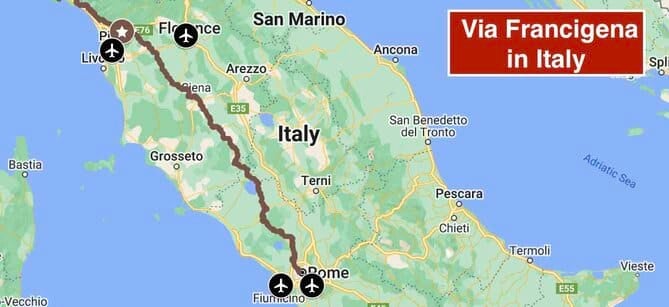
The route unfolds through some of Europe’s most stunning landscapes — from the White Cliffs of Dover and northern France’s historic plains, to the Alpine passes of Switzerland and the rolling hills of Tuscany. Each region offers its own charm: vineyards, ancient villages, Renaissance art, and Italian hospitality at every turn.
In Italy, the Via Francigena winds through Lucca, Siena, Viterbo, ending with a triumphant arrival in Rome. The Tuscany section is especially popular for its postcard-perfect countryside, while the final 100km to Rome offers a shorter, soulful walk that rewards pilgrims with the Testimonium certificate, similar to the Compostela in Santiago.
Whether you choose to walk or cycle the Via Francigena, this is a journey through history — a path of reflection, beauty, and deep connection with Europe’s spiritual heritage.
Why Walk the Via Francigena?
Walking the Via Francigena is more than a trek — it’s a journey through Europe’s living history. From the vineyards of Tuscany to the cobbled streets of Siena and the grandeur of Rome, every step feels like walking through time.
It is also a deeply spiritual route: arriving in Rome, the heart of the Catholic world, carries a profound sense of completion. Whether you seek faith, culture, or the sheer beauty of Italy’s countryside, the Via Francigena offers an experience as rich and transformative as the Camino de Santiago.
Suggested Routes
Highlights Of The Via Francigena in Italy
The Via Francigena in Italy passes through some of the best landscapes in Europe. Here are some of the must-see places along this beautiful route:
- Marvel at the historic city of Lucca.
- Step back to San Gimignano, a medieval town whose enchanting streets & historic towers evoke romance & charm.
- Get lost in Siena’s street maze.
- Cycle or walk in the pure Val D’orcia.
- Discover Renaissance Viterbo.
- Visit Esturian (Pre-Romanic) sites in Sutri.
- Size the scale of what was the Roman Empire in Rome.
- Fill your spiritual joy metre in Vatican City.
This beautiful pilgrimage to Rome was designated a European Cultural Route by the Council of Europe in 1994. Discover more about the Via Francigena on our Camino blog.
Route Options and Stages
- Full Italian Route (Lucca–Rome) – ~419 km, 20 nights.
- Tuscany Section (Lucca–Siena) – ~133 km, 7 nights.
- San Miniato–Siena – ~86 km, 6 nights.
- Viterbo–Rome (Final 100 km) – ~112 km, 6 nights; entitles you to the Testimonium.
- Cycling the Via Francigena – Lucca–Rome in ~11 nights.
👉 Explore itineraries: Via Francigena tours.
Testimonium Certificate on The Via Francigena
The renowned certificate awarded upon completing the Via Francigena is called the Testimonium. You can obtain it after finishing your pilgrimage to Rome, provided you’ve walked at least 100km. It is equivalent to the famous Compostela that was given to complete the Camino de Santiago.
To request your Testimonium, remember to take your ‘credenziali’ or pilgrim passport and stamp it in hotels, restaurants, churches, and monasteries.
Camino Ways Route Planner
For over 1000 years, pilgrims from all over the world have walked the Camino Ways across Europe in their quest for spirituality. Making the pilgrimage to Santiago de Compostela in Spain, they encountered a variety of people, cultures and beliefs, leading to friendship and new experiences. This continues today with the Camino de Santiago being the most well known and well-loved walk in the world. More than just a walk, the Camino de Santiago is an unforgettable and unique journey for the body, mind and soul.
Terrain and Difficulty
- Mix of dirt tracks, gravel roads, and quiet lanes.
- Average ascents/descents: ~400 m per day (moderate).
- Easier than alpine treks like the GR20 or TMB.
👉 See our Camino Packing List.
When to Walk the Via Francigena
- Spring & Autumn – ideal weather, fewer tourists.
- Summer – hot in July & August, with busy towns.
- Winter – wet and cold, limited accommodation.
👉 See our guide: Best time to walk the Camino.
What To Bring On The Via Francigena in Italy
Our packing guide ebook is free to download. This will help you decide what to bring on your Camino.
History of the Via Francigena
The Via Francigena was first recorded in the 10th century by Sigeric the Serious, Archbishop of Canterbury, who documented his pilgrimage to Rome. His notes mapped the route that later became Europe’s main north–south pilgrim road.
Unlike Roman highways, the Via Francigena was not a single paved road but a network of tracks linking abbeys and trading routes. Over the centuries, it connected pilgrims, merchants, and kingdoms, shaping cultural exchange across Europe.
Revived in the 20th century, the Via Francigena is today recognised as a European Cultural Route (1994) and a living link between past and present.
Services That Make It Easy
With CaminoWays, your journey is supported every step:
- Handpicked accommodation in towns and villages.
- Luggage transfers so you travel light.
- Walking notes, maps, and 24/7 assistance.
👉 See Guided Tours.
👉 Or browse Self-Guided Tours.
FAQs
What is the Via Francigena?
The Via Francigena is a historic pilgrimage route stretching from Canterbury in England to Rome, crossing France, Switzerland, and Italy.
How long does it take to walk the Via Francigena?
Walking the full route can take around three months. Many pilgrims choose shorter sections, such as the scenic Via Francigena in Tuscany or the last 100km into Rome.
What is the Testimonium certificate?
The Testimonium is the official pilgrim certificate, awarded to those who walk at least the last 100km of the Via Francigena into Rome. It is similar to the Compostela on the Camino de Santiago.
What are the highlights of the Via Francigena in Italy?
Highlights include Lucca, Siena, San Gimignano, Viterbo, the rolling hills of Tuscany, and arriving in Rome to visit St. Peter’s Basilica. For comparison, you can also explore the highlights of the Camino Frances.
When is the best time to walk the Via Francigena?
Spring and autumn are the best times, with pleasant weather and fewer crowds. Summer can be very hot, while winter is wet, and many hotels are closed. For preparation tips, check our Camino packing list.
The Sections Of The Via Francigena in Italy
San Miniato to Siena
What better way to uncover beautiful Tuscany than on foot? Rove across rolling green hills and lush vineyards, marvel at medieval architecture. On this section of the Via Francigena walking from San Miniato to Siena, there is a new treasure to be discovered each day with world-class Italian cuisine to fuel your journey.
This is a hiking holiday to suit everybody’s needs with relatively short distances and little elevation to allow you to take your time and enjoy every moment just like an Italian!
Viterbo to Rome
The final section of the Via Francigena from Viterbo to Rome, takes you ambling through the idyllic Lazio countryside and down Roman paths, across bountiful orchards of orange and lemon and lush olive groves on your way to one of the most iconic cities on the planet.
Lose yourself in the streets of Viterbo and Sutriand be transported back in time through the many historical sites en route. You’ll finish your week’s walking in the eternal city, tucking into the world’s best pizza washed down with a glass of Chianti.
Lucca to Siena Cycling
Perfect for lounging lovers looking for a relaxing cycling trip, we recommend an easy 8-day cycle from Lucca to Siena. The tour includes six cycling days, covering between 14 and 27 km daily. This tour is suitable for all levels. You will have plenty of time to explore historic towns and villages along the way and enjoy a leisurely lunch break.
Standard packages include half-board accommodation in selected properties and a holiday pack with practical information. Luggage transfers are also available.
Final Word
The Via Francigena is Europe’s ancient road to Rome — a journey of landscapes, faith, and culture. Whether you choose Tuscany’s rolling hills or the final stretch into the Eternal City, this Camino offers an unforgettable path to history and heart.
👉 If you’d like a personalised Via Francigena itinerary, try our Award Winning Camino Planner.
